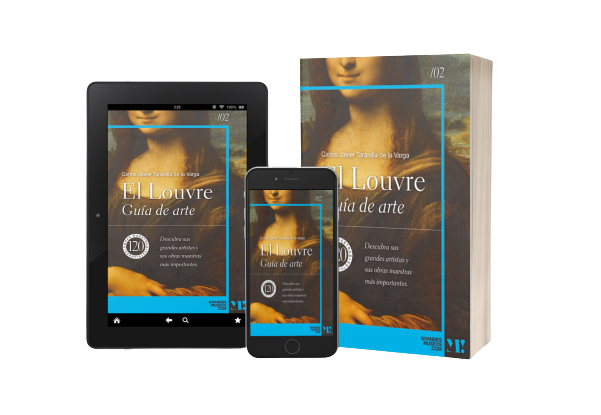
Download our spreadsheets and start discovering all that this museum has to offer.
Carlos Javier Taranilla de la Varga
Book series: Amazing Museums
Size: 14 x 21 cm
Pages: 345
Format: Paperback with color illustrations
Edition: 1st edition
Release date: November 2022
ISBN: 9788418943454
ISBN POD: 9788418943461
ISBN ebook: 9788418943478
RRP: 19,95€.

The essential artistic guide to discover and learn the essentials of the greatest works, artists and styles in the Louvre Museum.
Discover the immense art collection of the Louvre Museum, from Oriental, Egyptian, Greco-Roman and medieval antiquities to the great works of the Renaissance, Baroque, Neoclassicism and Romanticism. Painting, sculpture and decorative arts from all periods and civilizations. Works by great French masters such as Poussin and David, Flemish painters such as Rubens and Van Dyck, Dutch artists such as Rembrandt, Italian masters such as Leonardo da Vinci, Raphael, Michelangelo, Titian and Tintoretto, and Spanish artists such as El Greco, Zurbarán, Velázquez and Goya. An essential book to delve into the structure of the Louvre palace and its dependencies, learning in detail about 120 essential masterpieces among the more than 400,000 pieces contained in the most important museum in the world.

Learn about the history of one of the most important museums in the world: 120 essential masterpieces arranged by school, style and author.
Clear, complete and rigorous information on artists, works, periods and collections in general that the museum treasures in its headquarters.
Written in a didactic way both for the non-specialized reader and for students and the general public who wish to learn about the Louvre’s artistic treasures.
The accuracy of its exposition and the practical approach it provides, makes this book a useful work, both to prepare and to remember the visit to the museum.
Glossary of artistic terms necessary to understand the specialized concepts of the text and to establish relationships between the different stages of the history of art.

Download our spreadsheets and start discovering all that this museum has to offer.

Buy the book on Amazon.

Want to know more about the book? Download the product sheet.